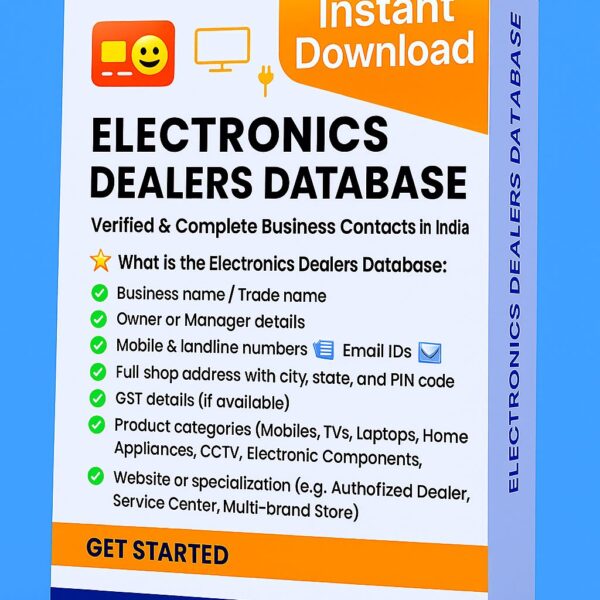
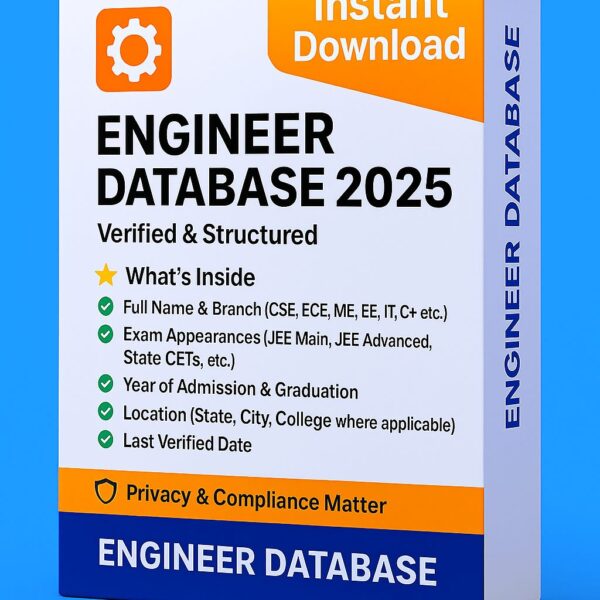

Employee Database 2025
₹9,500.00 Original price was: ₹9,500.00.₹3,500.00Current price is: ₹3,500.00.
| Data Format | Excel |
|---|---|
| Data Field | Company Name, Person Name, Mobile No., Email, City, Pincode, State, Address |
| Data Geography | PAN India |
| Total Data Count | 1068340 |
| Mobile No. Count | 1069318 |
| Email Count | 126628 |
Black Friday Blowout!
Specification
Description
Introduction 🌟
In today’s digital-first world, managing people data has become one of the most important responsibilities for any business. Whether you are a small startup with 10 employees or a large multinational with thousands spread across different regions, handling employee records is a task that cannot be taken lightly. A simple mistake in a spreadsheet, a lost file, or a duplicate entry can cost businesses time, money, and even legal consequences.
That’s where the Employee Database comes in. The Employee Database is not just a tool — it is the heart of modern workforce management. It acts as a centralized hub for all employee-related information, making it secure, searchable, scalable, and incredibly easy to use. Think of it as the single source of truth for your workforce — accurate, up-to-date, and ready whenever you need it.
This detailed description will explore everything about the Employee Database, from features and benefits to frequently asked questions and SEO-rich related keywords. It is designed to give you a complete picture of how this product works, why it matters, and how it can revolutionize the way you manage your organization.
What is an Employee Database? 🧩
An Employee Database is a structured system that stores all employee-related data in a centralized, digital format. Unlike paper files or scattered spreadsheets, the Employee Database consolidates every piece of information into one secure location.
It typically includes:
- Personal information (name, date of birth, contact details)
- Employment details (employee ID, hire date, department, job title)
- Payroll identifiers (bank account details, tax IDs)
- Certifications and training records
- Performance reviews and promotion history
- Benefits and leave details
- Emergency contacts
- Attached documents (contracts, NDAs, ID proofs)
By consolidating all this data, the Employee Database ensures HR, payroll, compliance, and operations teams have everything they need in a single, well-organized place.
Why Do You Need an Employee Database? 💡
Let’s be honest: spreadsheets are messy. Paper files get lost. Email attachments disappear. When you have more than a handful of employees, relying on manual recordkeeping becomes inefficient and risky. Here’s why a dedicated Employee Database is essential:
- Single Source of Truth – No more duplicate entries or mismatched versions of the same record.
- Time Savings – Automating onboarding, payroll, and reporting reduces manual work.
- Error Reduction – Data validation checks prevent incorrect or incomplete records.
- Compliance-Ready – Easily meet audit and legal requirements with accurate, traceable data.
- Scalability – Whether you have 50 or 50,000 employees, the database scales with you.
- Security – Sensitive information is encrypted and access-controlled.
Simply put, an Employee Database pays for itself by saving time, reducing risk, and giving you insights that scattered systems cannot.
The Scale of the Workforce 🌍
To understand why a robust Employee Database matters, let’s look at the scale of workforce data.
According to recent global estimates, the labour force is around 3.63 billion people. Out of this, about 3.3–3.4 billion are employed, while hundreds of millions are unemployed or informally employed. These figures show just how vast the workforce is worldwide.
Even if your business manages a tiny fraction of this, the scale is still significant. A 500-person company could generate thousands of records across payroll, certifications, performance reviews, and compliance documents. Without a system to manage it, errors and inefficiencies pile up quickly.
The Employee Database ensures that no matter how many records you handle, everything stays organized, secure, and easy to retrieve.
Features of the Employee Database ⚙️
1. Rich Employee Profiles
Each employee has a comprehensive profile that can include:
- Core details: name, contact, ID numbers
- Job information: department, manager, job title, hire date
- Attachments: ID documents, offer letters, contracts, certifications
- Skills & training: completed courses, certifications, ongoing programs
- Benefits enrollment & medical details (optional and secure)
2. Smart Search & Filtering 🔍
Finding an employee shouldn’t take more than a second. With advanced search tools, you can locate records by name, ID, skill, hire date, department, or even custom tags.
3. Deduplication & Data Validation ✔️
The system automatically detects duplicate entries, validates fields like emails and phone numbers, and prompts for corrections before saving.
4. Bulk Operations 📂
Need to update job titles, department codes, or payroll identifiers for dozens of employees? Bulk operations make it fast and painless.
5. Role-Based Access & Permissions 🔒
Protect sensitive information by limiting access to authorized users. HR can see salaries, managers can view direct reports, and finance can view payroll fields.
6. Audit Logs & Compliance Tools 🧾
Every change is logged with who made it and when. Generate exportable reports for compliance, tax audits, or legal investigations.
7. Reporting & Analytics 📊
Generate prebuilt reports (headcount, attrition, demographics) or custom analytics for strategic planning. Export them for leadership or board reviews.
8. Integration & API 🔗
Connect seamlessly with payroll, time-tracking, background-check vendors, Slack/Teams, and more. REST API support ensures custom integrations.
9. Automation & Workflows 🤖
- Automated onboarding tasks
- Probation reminders
- Certification renewal alerts
- Offboarding checklists
10. Deployment Flexibility ☁️
Choose cloud-based hosting, regional data centers (for residency compliance), or private cloud/on-prem deployment for enterprise-grade control.
Security & Compliance 🔐
Data security is non-negotiable. The Employee Database includes:
- Encryption at rest and in transit
- Field-level access permissions
- Multi-factor authentication
- Audit-ready logs
- Configurable data retention and deletion policies
- Regional hosting for data residency laws
These features ensure compliance with GDPR, CCPA, and other privacy frameworks.
Benefits of Using the Employee Database 🎯
- Productivity Boost – Free HR teams from manual tasks.
- Reduced Errors – Fewer payroll mistakes and compliance gaps.
- Strategic Insights – Reliable reports for planning and budgeting.
- Employee Satisfaction – Faster onboarding, smoother processes.
- Scalability – Supports growth without adding admin burden.
Who Should Use the Employee Database? 🙌
The Employee Database is designed for:
- HR teams – to manage employee lifecycles
- Finance & payroll teams – to ensure accuracy in payments
- Operations managers – to track shifts, rosters, and resources
- Compliance officers – to meet audit requirements
- Startups, SMEs, and enterprises – scalable to any size
The Employee Database is ideal for anyone looking to buy 🔎
Similar Keywords for SEO:
- employee records
- staff database
- HR database
- personnel database
- employee directory
- workforce database
- employee information system
- HRIS (Human Resource Information System)
- employee contact database
- personnel records management
- staff contact list
- workforce management database
- employee master data
- employee data platform
- staff registry
- employee profile system
- people-data platform
- HR master data management
Frequently Asked Questions (FAQ) ❓
Q1: What data can I store in the Employee Database?
Everything from personal details, job information, payroll IDs, certifications, performance history, and attached documents.
Q2: How secure is my employee data?
Extremely secure — with encryption, permissions, and audit logs. Only authorized users can access sensitive data.
Q3: Can I import existing spreadsheets?
Yes. Use the import wizard with error validation and deduplication.
Q4: Does it integrate with other systems?
Yes. Payroll, attendance, HRIS, and more. APIs allow custom integrations.
Q5: How many records can it handle?
It scales from small teams to millions of records, suitable for enterprises and even government-sized datasets.
Q6: How does it help with compliance?
Built-in audit logs, retention policies, and document storage ensure compliance with data laws and audits.
Q7: Can it be customized?
Yes. Add custom fields, workflows, and reports tailored to your needs.
Best Practices 🧼
- Standardize data formats (phone numbers, addresses).
- Restrict sensitive fields with permissions.
- Automate routine tasks like renewals and reminders.
- Schedule regular data audits for accuracy.
- Integrate early with payroll and IT provisioning.
Success Stories ✨
- Startup: Reduced onboarding time from 3 days to 8 hours with automated tasks.
- Healthcare provider: Avoided compliance issues by tracking certification expiries.
- Multinational: Consolidated regional HR systems into one Employee Database, saving hundreds of admin hours.
Final Pitch 🚀
Your employees are your most valuable asset. Managing their data should not be stressful. The Employee Databasegives you one secure, scalable, and user-friendly platform to manage everything about your workforce. From onboarding to offboarding, payroll to compliance, analytics to automation — it covers it all.
Say goodbye to scattered spreadsheets and hello to clarity, speed, and control. 🌟
👉 The future of HR and workforce management starts here — with the Employee Database.

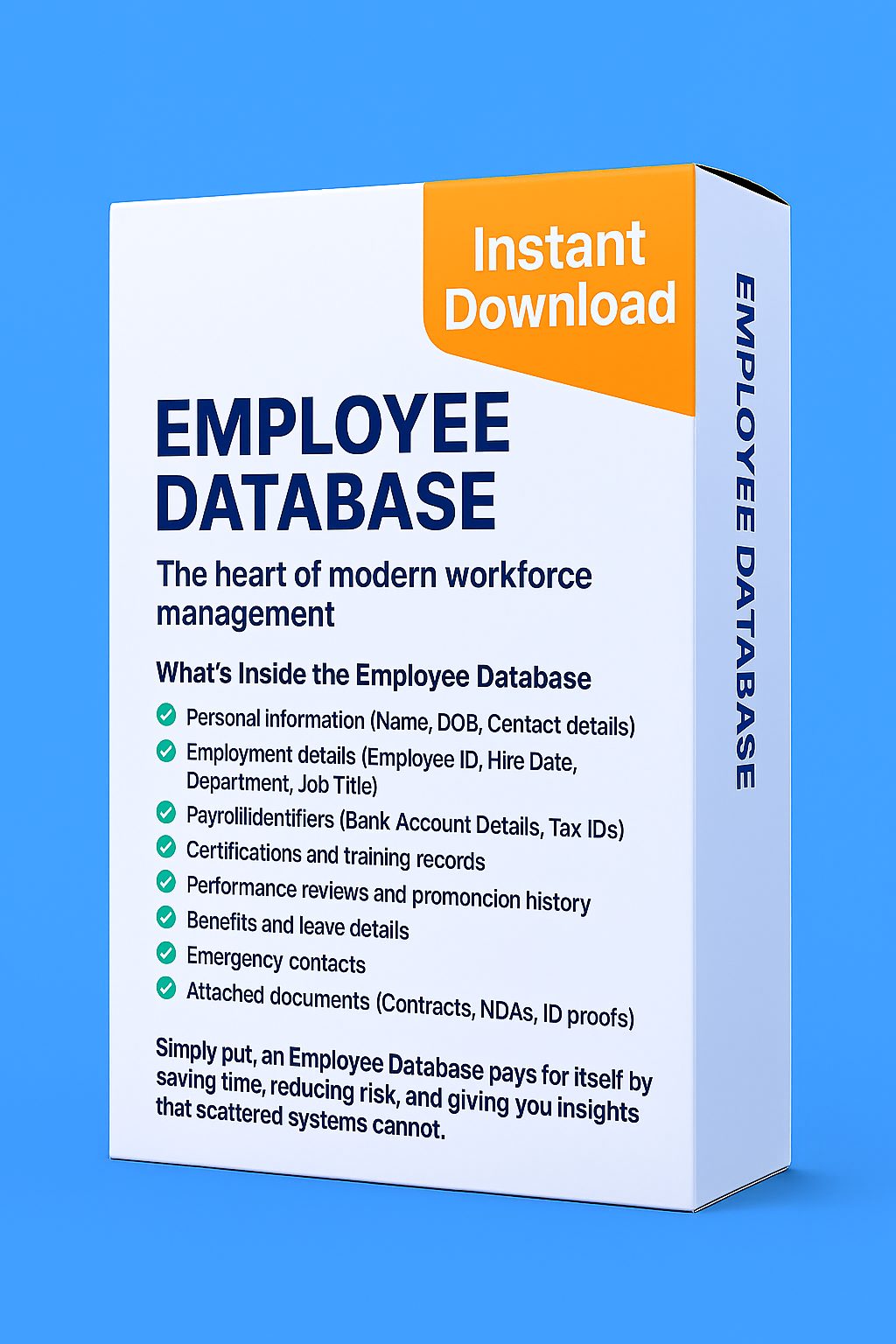
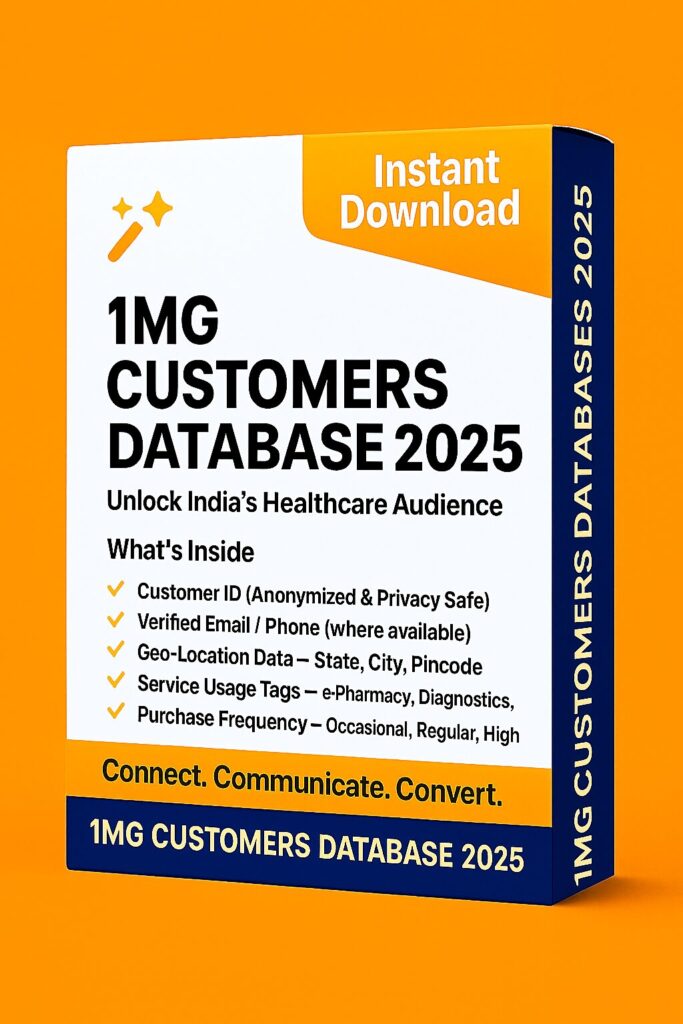
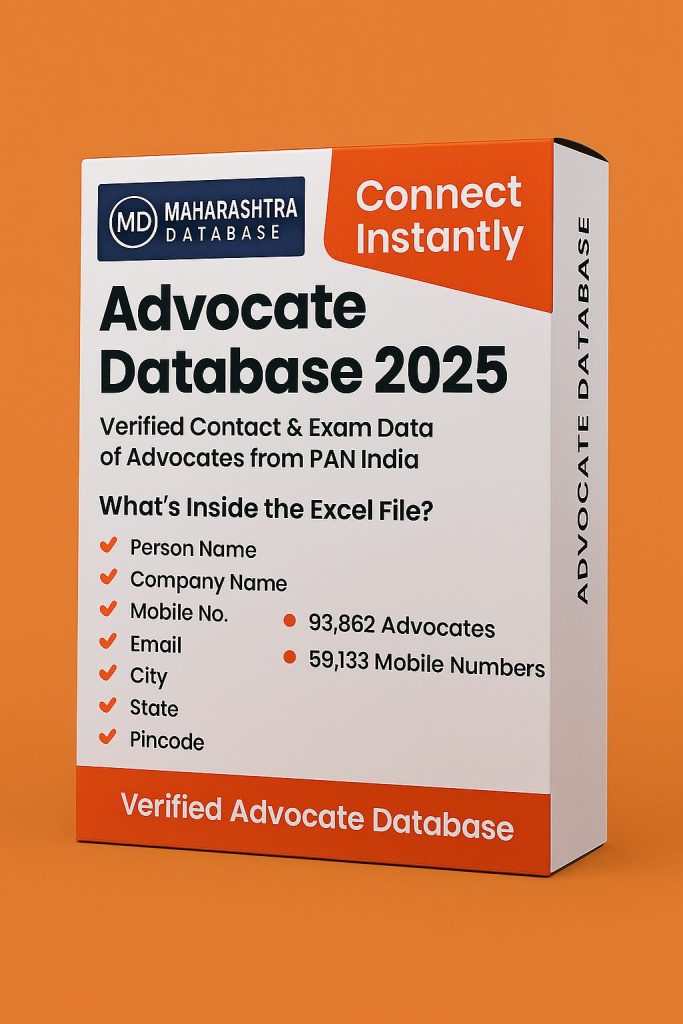
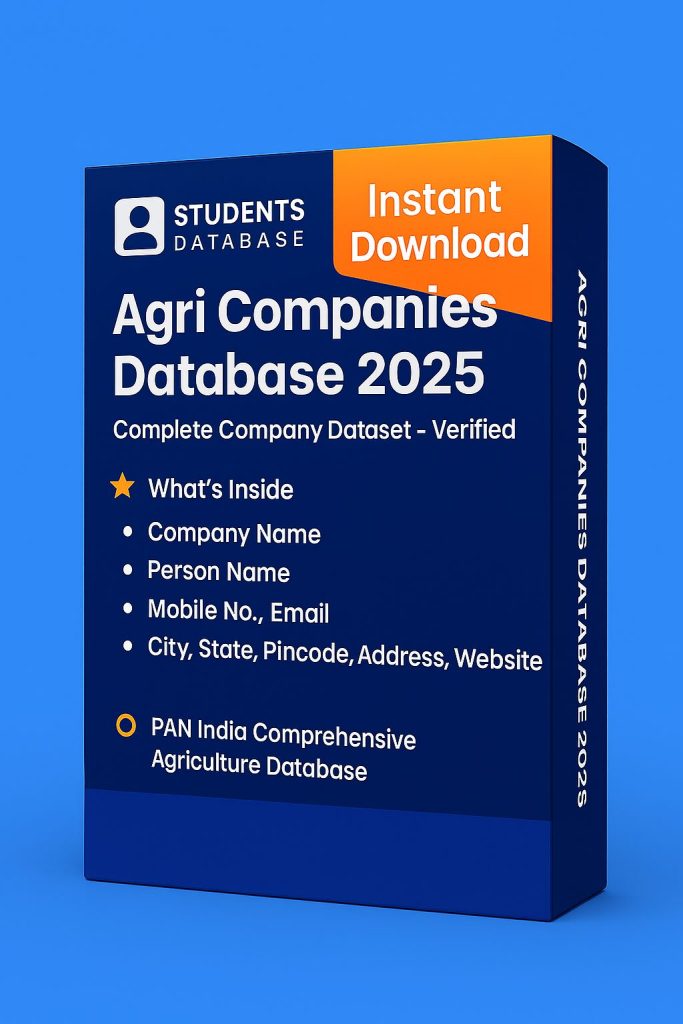
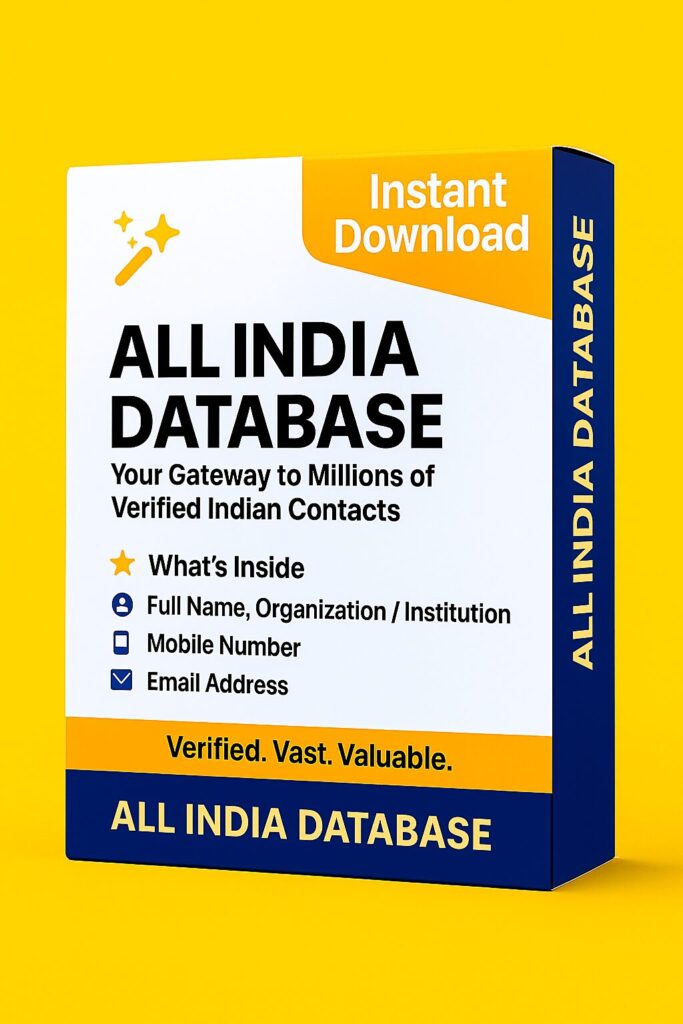
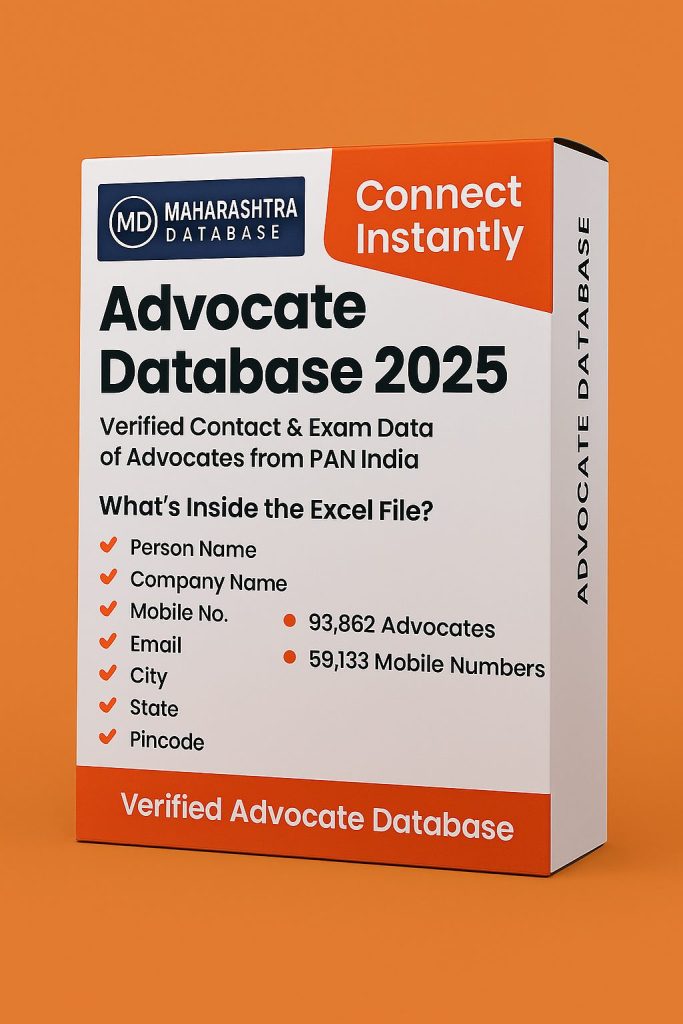
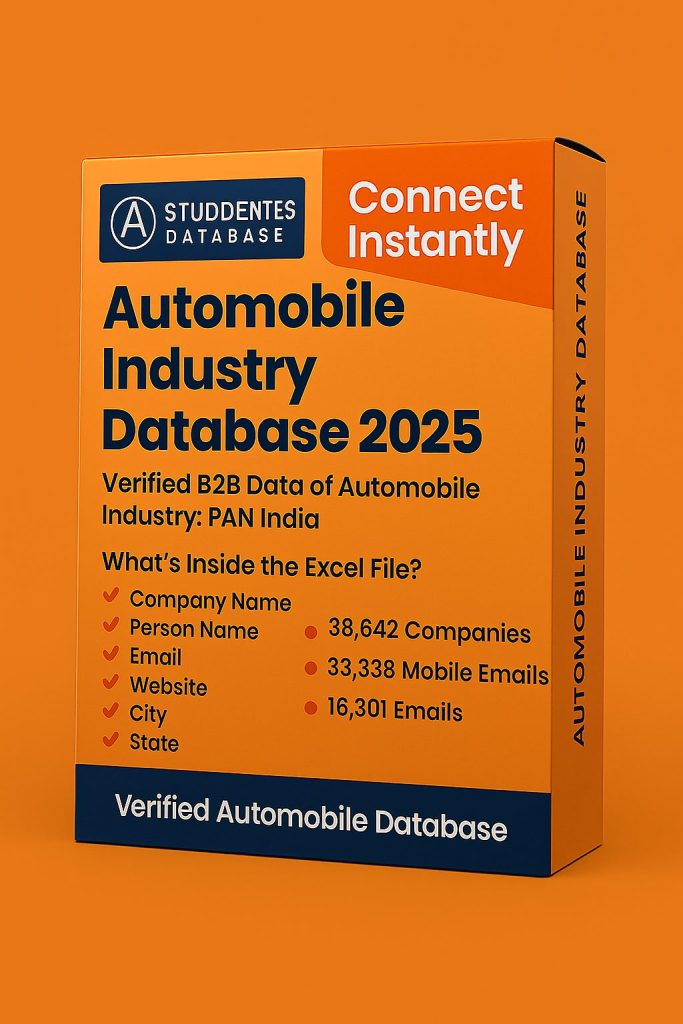
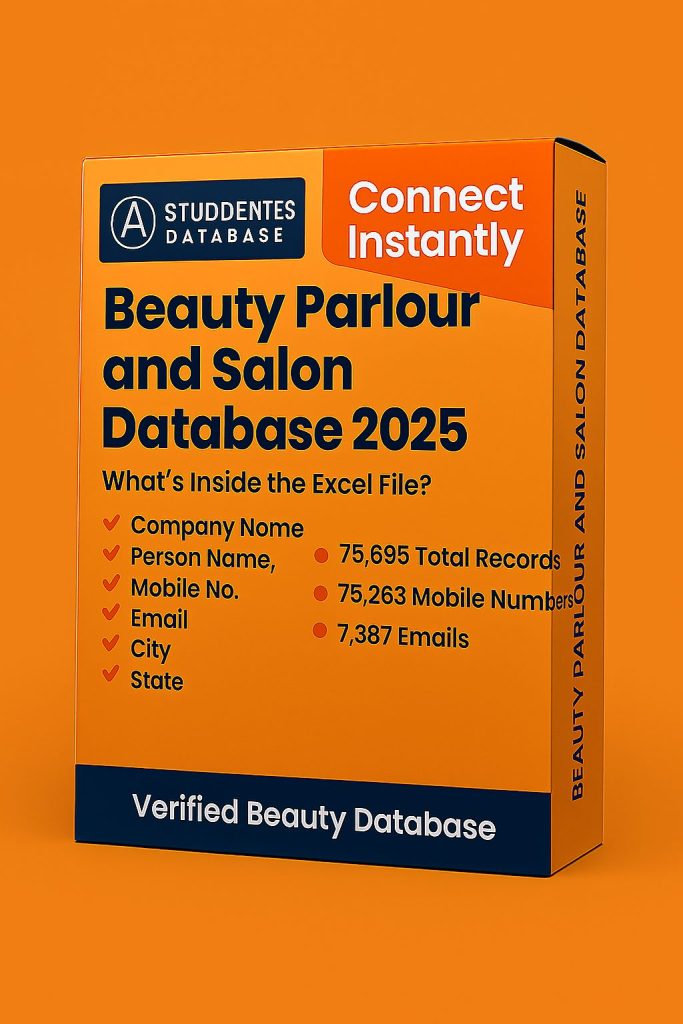
Reviews
Clear filtersThere are no reviews yet.